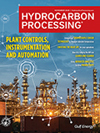Aromatics
CNOOC completes construction on $2.9-B, 1.8-MMtpy integrated complex in east China
China National Offshore Oil Corp has completed building a $2.9-B, 1.8-MMtpy integrated refining and petrochemical complex in eastern China
Boosting butylenes production from an FCCU through an HBC catalyst technology
Based on the generation and conversion mechanism of butylenes during the FCC process, this article details the design, development and commercial trials of the latest high-butylenes selectivity catalysts (HBC) series catalysts boosting butylenes without compromising gasoline yield. Its potential to increase butylenes has been confirmed through laboratory evaluation and commercial trial results.
Synergize FCCUs and hydrocracking processing units to maximize refining margins—Part 2
Part 1 of this article appeared in the February issue. Part 2 here will explore the role of FCC and hydrocracking in crude-to-chemicals and the challenge of cracked feeds, among other topics.
Synergize FCCUs and hydrocracking processing units to maximize refining margins
India eyes $87 B investment in petrochemicals sector over next decade
India is expected to receive investments worth $87 B in the next decade to meet the nation's rising demand for petrochemicals, the country's oil minister Hardeep Singh Puri said.
Mitsubishi Chemical receives ISCC Plus certification for several different chemical products
The Mitsubishi Chemical Group has acquired ISCC PLUS certification for several different chemical products at four different plants. This certification guarantees that recycled raw materials and biomass raw materials are properly managed in the supply chain, including product manufacturing.
Bridging the innovation gap in the chemical industry
Productive collaboration between established chemical companies and agile climate startups is key to bridging this gap and accelerating decarbonization within the global petrochemicals/chemicals industry.
Gunvor growing Asia operations, expanding into LPG, naphtha, gasoline, aromatics, power
Global energy trader Gunvor Group is growing its Asia operations to expand in existing markets such as liquefied petroleum gas (LPG), naphtha, gasoline and aromatics as well as into new areas including power.

- Honeywell to supply integrated automation systems for flagship UK carbon capture projects 12/4
- Aduro Clean Technologies collaborates with ECOCE to advance plastics recycling in Mexico 12/4
- FincoEnergies launches GoodFuels B15: A reliable and compliant drop-in biofuel for inland shipping 12/4
- DevvStream, Southern Energy Renewables target low-cost, carbon-negative SAF and green methanol 12/4
- AFPM: Revised fuel economy standards would put CAFE back on solid legal footing 12/4
- ITT introduced a secondary containment system for its ICM metallic magnetic drive process pump 12/4




